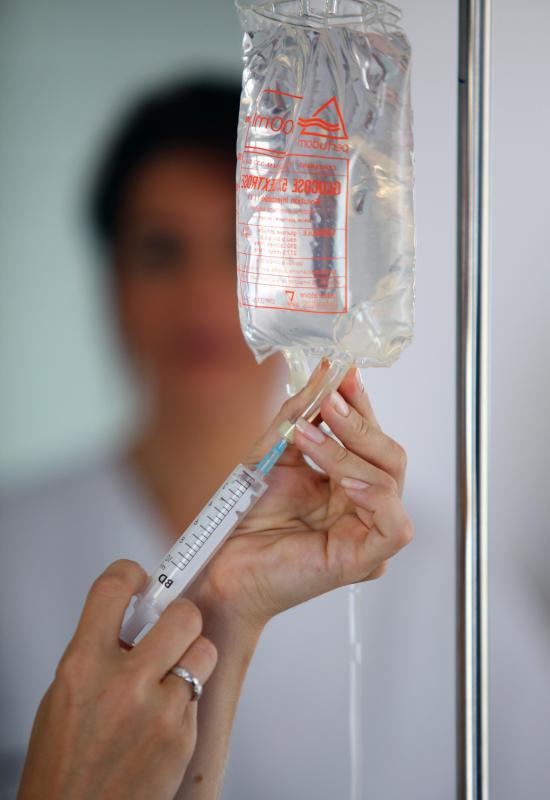At TheHealthBoard, we're committed to delivering accurate, trustworthy information. Our expert-authored content is rigorously fact-checked and sourced from credible authorities. Discover how we uphold the highest standards in providing you with reliable knowledge.
What Are Heparin Locks?
Heparin locks are devices used to secure venous access to a patient without setting up an intravenous line. The doctor inserts an intravenous catheter, checks to make sure it is placed right, caps it, and tapes it in place. With no lines connected, the patient enjoys freedom of movement. When a care provider needs to inject medication, she can use the heparin lock for this purpose, instead of having to stick the patient with a needle again. This device is also known as a saline lock.
Doctors can recommend heparin locks for a number of reasons. If a patient needs intermittent injections during a hospitalization, this can make the patient's stay more comfortable. Instead of having a fresh needle stick every time he needs an injection, the patient will be able to receive drugs through the heparin lock. The device can also be useful to make sure venous access will be available without tying the patient up with intravenous lines; in labor and delivery, for example, a heparin lock keeps a vein open so doctors can convert it to an intravenous line or administer medications quickly if the patient starts to experience complications.

To use heparin locks, care providers will wipe off the plug, insert a needle, and flush the lock with heparin or saline, depending on hospital protocol. This keeps the line clear and prevents clotting. It also allows the care provider to confirm that blood wells up into the lock, indicating that the needle is still in the right place. Then, the injection can be given. The term “heparin lock” is a reference to the anticoagulant care providers may use to maintain the device.

If a patient needs an intravenous line, the heparin lock already in place can be converted very quickly to an IV. Tubing will allow for the slow delivery of medication or fluids to keep the patient hydrated. It will mean that the patient has to be careful while moving around, as the line can tangle or could pull out the needle. Intravenous lines also tend to be less comfortable than taped-off heparin locks.

Placing heparin locks should only take a few minutes. Patients may feel uncomfortable while the care provider positions the needle and tapes it in, but the pain should dissipate. If it continues, a nurse should be told immediately. Likewise, if patients notice burning, itching, or skin irritation during an injection, they should notify the care provider, as the needle may be slipping, forcing the injection to leak into the neighboring tissue instead of going into the vein.
AS FEATURED ON:
AS FEATURED ON:













Discuss this Article
Post your comments